Stoat
- March 21, 2024
- 0 comment
The stoat, a fascinating creature of the Mustelid family, embodies agility, intelligence, and adaptability in its petite frame. With a slender body measuring around 30 to 40 centimeters in length, complemented by a bushy tail adding another 10 to 15 centimeters, stoats possess a striking appearance. Their fur undergoes a seasonal transformation, donning a snowy white coat in winter to blend seamlessly with their surroundings, while transitioning to a rich brown hue during warmer months for optimal camouflage. Found across Europe, Asia, and North America, stoats thrive in diverse habitats ranging from dense forests to open grasslands.
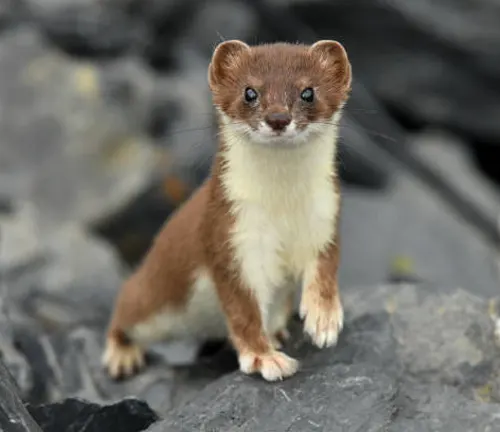
As carnivorous predators, they exhibit remarkable hunting prowess, preying on small mammals like rabbits, rodents, and birds. Employing stealth and cunning, stoats navigate their environments with ease, employing a variety of hunting techniques including stalking, pouncing, and ambushing. Their reproductive behavior is equally intriguing, with females giving birth to litters of kits in underground burrows during the spring months. Stoats play a vital role in ecosystems as top predators, regulating prey populations and contributing to overall ecosystem health. Despite facing threats such as habitat loss and predation, stoats continue to captivate and intrigue with their remarkable adaptability and significance in the natural world.
Stoat Characteristics
| Characteristic | Description |
|---|---|
| Length | 30 – 40 centimeters (body), additional 10 – 15 centimeters (tail) |
| Weight | 200 – 450 grams |
| Fur Color | White in winter, brown in summer |
| Habitat | Diverse habitats including forests, grasslands, moorlands |
| Distribution | Europe, Asia, North America |
| Diet | Carnivorous, preys on small mammals (rabbits, rodents, birds) |
| Hunting Techniques | Stalking, pouncing, ambushing |
| Reproduction | Short gestation period (around 280 days), litters of up to twelve kits born in spring |
| Role in Ecosystems | Top predator, regulates prey populations, contributes to ecosystem balance |
| Conservation Status | Not endangered, faces threats such as habitat loss and predation |
| Interaction with Humans | Typically elusive, may exhibit defensive behavior when threatened, occasional conflict with humans |
Stoat: A Fascinating Creature of the Mustelid Family
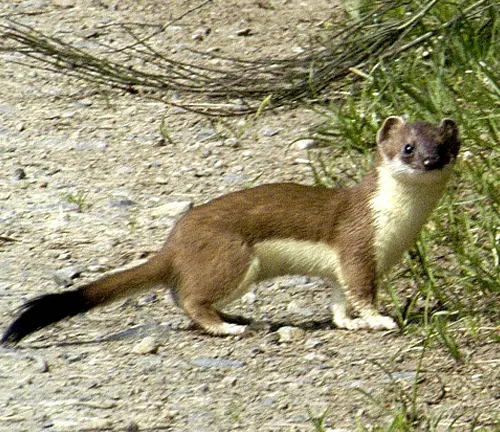
The stoat, scientifically known as Mustela erminea, is a remarkable member of the Mustelid family, which also includes ferrets, otters, and weasels. This small carnivorous mammal is renowned for its agility, cunning nature, and distinctive fur coat. In this article, we delve into the intriguing world of stoats, exploring their characteristics, habitat, behavior, and significance in ecosystems.
Appearance and Physical Characteristics


Stoats are small carnivorous mammals characterized by their slender body and distinctive fur coat. They typically measure around 30 to 40 centimeters in length, with an additional 10 to 15 centimeters for their bushy tail. Their slender build enables them to navigate through dense vegetation with ease, making them efficient hunters in their natural habitat. One notable feature of stoats is their seasonal coloration of fur. In winter, their fur turns white to blend with the snowy surroundings, providing them with camouflage against predators and prey alike. During the warmer months, their fur transitions to a brown coloration, offering better camouflage in their environment. Additionally, stoats have small, rounded ears and sharp, pointed faces, giving them a keen and alert appearance. Their agile movements and swift reflexes make them formidable hunters, capable of capturing prey much larger than themselves. Overall, the appearance and physical characteristics of stoats reflect their adaptability and prowess as predators in their ecosystems.
Habitat and Distribution
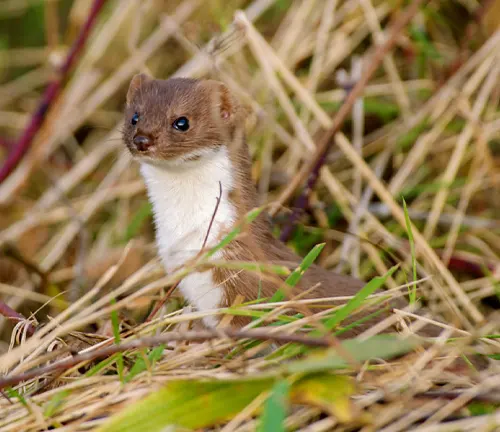

Stoats are highly adaptable creatures found across a diverse range of habitats in Europe, Asia, and North America. They inhabit various environments, including forests, grasslands, moorlands, and tundra regions. Their ability to thrive in different ecosystems highlights their remarkable adaptability to different environmental conditions. In Europe, stoats are commonly found in woodlands, hedgerows, and agricultural areas. They also inhabit grasslands and heathlands in more open landscapes. In Asia, stoats are distributed across a wide range of habitats, from temperate forests to alpine tundra regions. In North America, they inhabit similar habitats to those found in Europe and Asia, including forests, grasslands, and shrublands.
Stoats are known for their ability to colonize new areas quickly, making them highly successful in a variety of landscapes. Despite their adaptability, stoats are particularly associated with areas rich in prey species, such as rodents and rabbits, which form the basis of their diet. Understanding the habitat and distribution of stoats is essential for conservation efforts and managing human-wildlife interactions in regions where they are present.
Diet and Hunting Behavior


Stoats are carnivorous predators with a diverse diet primarily consisting of small mammals such as rabbits, rodents, and birds. They are opportunistic hunters and will also consume eggs, insects, and occasionally fruits or vegetation when other prey is scarce. Stoats are agile and cunning hunters, employing a variety of hunting techniques to capture their prey. They rely on stealth and patience to stalk their prey, using their keen sense of smell and sharp vision to detect potential targets. Once they have located their prey, stoats will pounce with remarkable speed and agility, using their sharp claws and teeth to deliver a swift and lethal bite. In addition to stalking, stoats are also proficient ambush predators, lying in wait for unsuspecting prey to pass by before launching a sudden attack.
Their slender bodies and swift movements enable them to navigate through dense vegetation with ease, making them highly effective hunters in their natural habitat. Stoats are known for their voracious appetite and will often kill more prey than they can immediately consume, storing the excess food for later consumption. Overall, the diet and hunting behavior of stoats reflect their adaptability and prowess as top predators in their ecosystems.
Techniques in Hunting
Stoats employ several hunting techniques to capture their prey with precision and efficiency. These techniques showcase their agility, intelligence, and adaptability as carnivorous predators.

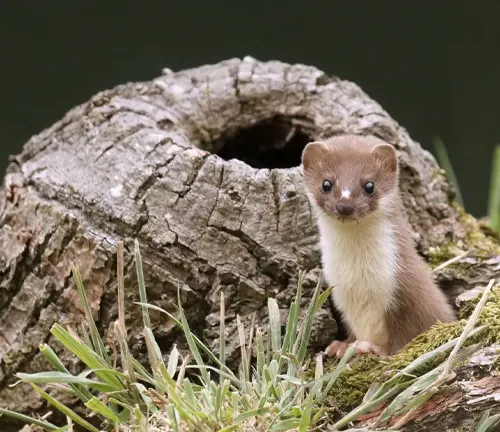
- Stalking: Stoats are adept stalkers, using stealth and patience to silently approach their prey. They rely on their keen sense of smell and sharp vision to track down potential targets, moving slowly and deliberately to avoid detection. With careful movements, they inch closer to their prey until they are within striking distance.
- Pouncing: Once in close proximity to their prey, stoats unleash a swift and decisive pounce. With lightning-fast reflexes, they launch themselves towards their target, using their powerful hind legs to propel themselves forward. This sudden burst of speed catches their prey off guard, giving them little time to react.
- Ambushing: Stoats are skilled ambush predators, lying in wait for unsuspecting prey to pass by. They conceal themselves in dense vegetation or behind obstacles, patiently waiting for the perfect opportunity to strike. When their prey is within range, stoats spring into action with a sudden burst of speed, seizing their target before it has a chance to escape.
- Chasing: In some cases, stoats may engage in brief chases to capture fast-moving prey. They use their agility and speed to pursue their target, employing strategic maneuvers to outmaneuver and outpace their prey. Stoats are relentless pursuers, often employing a combination of stalking, pouncing, and chasing to secure their meal.
Reproduction and Life Cycle
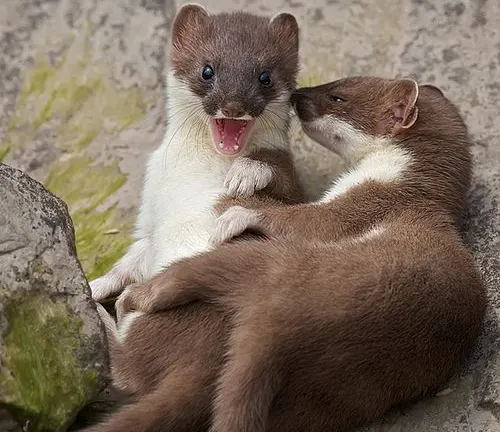
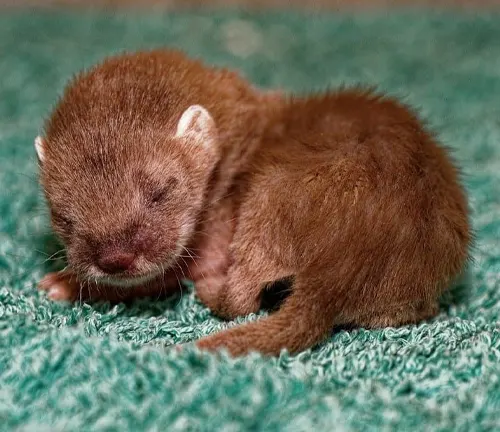
Stoats reproduce through sexual reproduction, with distinct mating behaviors and life stages that contribute to their population dynamics.
- Mating Season: Stoats typically mate during the spring months, although the exact timing may vary depending on factors such as climate and food availability. During this time, male stoats actively seek out females to mate with, often engaging in courtship displays to attract potential mates.
- Courtship and Mating: Courtship rituals in stoats may involve playful chasing, vocalizations, and scent marking to signal readiness to mate. Once a pair has bonded, mating occurs, usually in concealed locations such as burrows or dens.
- Gestation Period: After mating, female stoats undergo a gestation period of approximately 280 days. During this time, the fertilized eggs develop within the female’s uterus until they are ready to give birth.
- Birth of Kits: Female stoats give birth to litters of kits, typically ranging from four to twelve offspring. The kits are born blind, hairless, and entirely dependent on their mother for warmth and nourishment.
- Maternal Care: Female stoats provide extensive maternal care to their offspring, nursing them with milk and keeping them warm in the den. As the kits grow, the mother teaches them essential skills such as hunting and grooming to prepare them for independence.
- Weaning and Independence: After several weeks, the kits begin to open their eyes and grow a coat of fur. They gradually transition from milk to solid food, learning to hunt and forage under the guidance of their mother. By the age of two to three months, the kits become independent and leave the den to establish their territories.
- Maturity and Reproduction: Stoats reach sexual maturity at around one year of age, although females may mature slightly earlier than males. Once mature, they participate in the annual mating rituals, continuing the reproductive cycle and contributing to the population dynamics of stoats in their environment.
Role in Ecosystems
The stoat plays a crucial role in ecosystems as a top predator, influencing the dynamics of prey populations and contributing to overall ecosystem balance. Here are some key aspects of the stoat’s role in ecosystems:

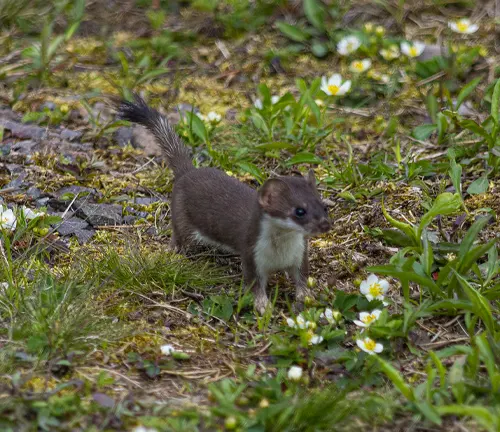
Regulation of Prey Populations
Stoats primarily prey on small mammals such as rabbits, rodents, and birds. By controlling the population sizes of these prey species, stoats help prevent overgrazing and maintain the health of vegetation communities. This regulation of prey populations also indirectly benefits other species within the ecosystem by preventing imbalances in food resources.
Impact on Food Webs
As top predators, stoats occupy a pivotal position in food webs, regulating the abundance and distribution of species at lower trophic levels. Their predatory activities have cascading effects on the entire ecosystem, influencing the abundance and behavior of both prey and predator species.
Disease Control
Stoats may indirectly contribute to disease control by preying on small mammals that serve as reservoirs for infectious diseases. By reducing the population sizes of these reservoir species, stoats help minimize the spread of diseases within ecosystems, contributing to overall ecological health.
Seed Dispersal
Stoats may inadvertently aid in seed dispersal through their hunting activities. As they move through their habitats in search of prey, stoats may carry seeds on their fur or in their digestive systems, inadvertently dispersing them to new locations. This process contributes to the diversity and resilience of plant communities within ecosystems.
Indicators of Ecosystem Health
The presence and behavior of stoats can serve as indicators of ecosystem health and integrity. Healthy stoat populations often reflect the availability of suitable habitat and prey resources, while declines in stoat populations may signal environmental disturbances or imbalances within ecosystems.
Conservation Status and Threats
The conservation status of stoats varies depending on the region, but they generally face a range of threats that impact their populations. Here’s an overview of the conservation status and threats faced by stoats:
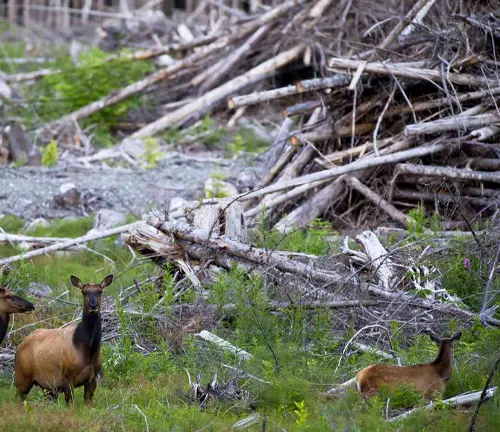

- Habitat Loss and Fragmentation: Habitat loss due to urbanization, agriculture, and industrial development poses a significant threat to stoat populations. Fragmentation of natural habitats further exacerbates the problem by isolating populations and reducing genetic diversity.
- Climate Change: Climate change alters habitat conditions and can disrupt stoat populations by affecting prey availability, altering vegetation patterns, and increasing the frequency and intensity of extreme weather events. These changes can make it challenging for stoats to adapt and thrive in their habitats.
- Predation and Competition: Stoats face predation from larger carnivores such as foxes, birds of prey, and domestic animals. Competition for resources with other predators and invasive species can also impact stoat populations, particularly in areas where resources are limited.
- Human-Wildlife Conflict: Stoats may come into conflict with humans due to predation on game species, poultry, and agricultural pests. In response, humans may employ control measures such as trapping, poisoning, or habitat modification, which can negatively impact stoat populations.
- Hunting and Trapping: Historically, stoats were hunted and trapped for their fur, which was used in the fur trade. While hunting for fur is less common today, it still poses a localized threat in some regions where trapping regulations may be less stringent.
- Introduced Diseases: Stoats may be susceptible to diseases introduced by domestic animals or invasive species. Outbreaks of diseases such as canine distemper or parvovirus can decimate stoat populations, particularly in areas with high densities of domestic pets or invasive predators.
- Invasive Species: The introduction of invasive predators, such as feral cats and ferrets, can pose a significant threat to stoats by competing for resources and preying on them directly. Invasive species can disrupt ecosystem dynamics and drive declines in native wildlife populations, including stoats.
- Pollution: Pollution from agricultural runoff, industrial waste, and chemical contaminants can degrade stoat habitats and affect their health and reproductive success. Pollution can also accumulate in prey species, leading to secondary poisoning of stoats through contaminated food sources.
Different Species
Least Weasel
(Mustela nivalis)
Often considered the smallest carnivore in the world, the least weasel shares many similarities with the stoat in terms of appearance and behavior. However, it typically has a shorter tail and smaller size overall.
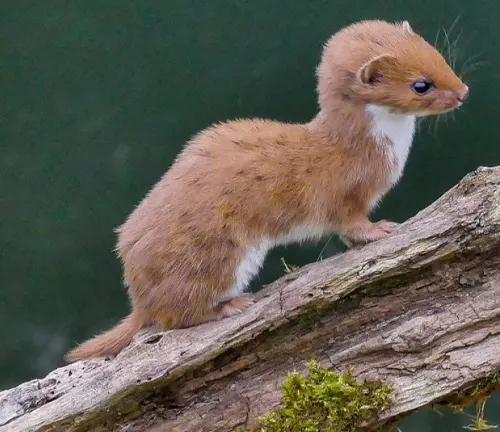

Long-tailed Weasel
(Mustela frenata)
Found in North and Central America, the long-tailed weasel is closely related to the stoat and shares similar hunting habits. It is characterized by its long, slender body and distinctive black-tipped tail.
European Mink
(Mustela lutreola)
While not as closely related to the stoat as other species within the Mustela genus, the European mink is also a member of the Mustelidae family. It inhabits wetland areas in Europe and is known for its semi-aquatic lifestyle.


Siberian Weasel
(Mustela sibirica)
Native to parts of Asia, including Siberia and China, the Siberian weasel is another species closely related to the stoat. It shares many physical and behavioral traits with its more well-known cousin.
Frequently Asked Questions (FAQs)
- What is a stoat?
A stoat, scientifically known as Mustela erminea, is a small carnivorous mammal belonging to the Mustelidae family. It is characterized by its slender body, bushy tail, and seasonal coloration of fur. - Where do stoats live?
Stoats inhabit a wide range of habitats across Europe, Asia, and North America, including forests, grasslands, moorlands, and tundra regions. - What do stoats eat?
Stoats are carnivorous predators that primarily feed on small mammals such as rabbits, rodents, and birds. They may also consume eggs, insects, and occasionally fruits or vegetation. - How big do stoats get?
Stoats typically measure around 30 to 40 centimeters in length, with an additional 10 to 15 centimeters for the tail. They weigh between 200 to 450 grams. - Are stoats dangerous to humans?
Stoats are generally not considered dangerous to humans. They are elusive creatures and tend to avoid confrontations. However, they may exhibit defensive behavior if threatened or cornered. - Do stoats hibernate?
Stoats do not hibernate. Instead, they remain active throughout the year, adapting to seasonal changes by adjusting their behavior and fur coloration. - What predators do stoats have?
Stoats have several natural predators, including birds of prey such as owls and hawks, larger carnivores like foxes and martens, and domestic animals such as dogs and cats. - How do stoats reproduce?
Stoats reproduce through sexual reproduction, with females giving birth to litters of kits after a short gestation period of around 280 days. They typically mate in the spring, and the kits are born blind and helpless in underground burrows. - Are stoats legal to own as pets?
Stoats are wild animals and are not suitable as pets. In many regions, it is illegal to own or keep stoats as pets due to their complex needs and natural behaviors. - How long do stoats live in the wild?
In the wild, stoats have an average lifespan of around 1 to 3 years. However, some individuals may live longer under favorable conditions. - What is the difference between a stoat and a weasel?
While stoats and weasels belong to the same family (Mustelidae), they are different species. One key difference is in their size, with stoats being larger than weasels. Additionally, stoats have a distinctive black-tipped tail, whereas weasels have shorter tails. - Do stoats have any predators?
Yes, stoats have several natural predators, including birds of prey, larger carnivores, and domestic animals. - Are stoats solitary animals?
Stoats are generally solitary animals, although they may interact briefly during mating season. They establish territories and are primarily solitary hunters. - How do stoats defend themselves?
Stoats rely on their agility, speed, and camouflage to evade predators. They may also exhibit defensive behaviors such as emitting musk or emitting high-pitched vocalizations when threatened. - What is the conservation status of stoats?
Stoats are not currently listed as endangered species. However, they face various threats, including habitat loss, pollution, and predation. Monitoring and conservation efforts are essential to ensure their long-term survival.



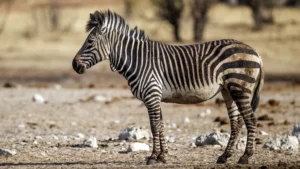

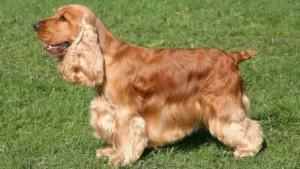
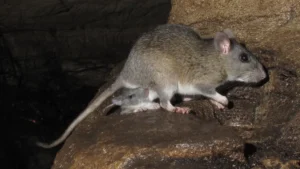
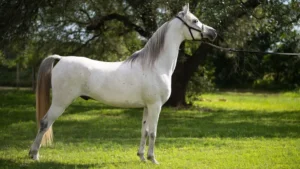
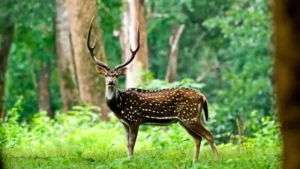


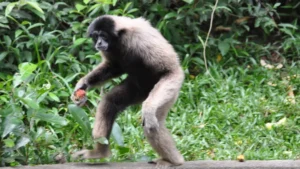
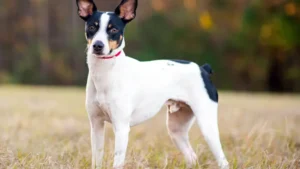

Leave your comment